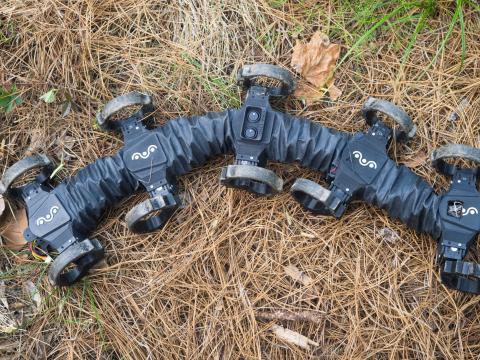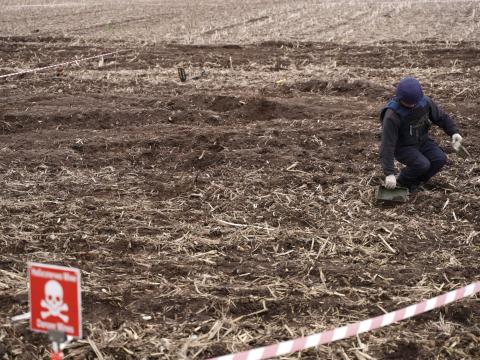President's Commentary: Robots: Trusted Partners and Battle Buddies
We are seeing robots touch virtually every aspect of life. The integration of engineering design and technologies such as artificial intelligence and machine learning are opening up a new frontier to a world that was once the domain of humans.
In 1991, as part of an education program I was taking, I had an opportunity to visit several factories that were using robotics. That included visits to an automobile assembly factory in Kentucky and a Hitachi assembly plant in Japan. I was impressed with the precision and efficiency of the robots I saw in those plants. At the time, factory robots performed mostly routine, repetitive or dangerous tasks. They saved time and money, provided precision assembly and improved productivity, in part by reducing human errors. They precisely drilled every hole for every rivet. Today, they are becoming much more functional, as those systems that were once so amazing, pale in comparison to the capabilities being unleashed through the powerful combination of complementary technologies: robots, mobility and artificial intelligence (AI), including machine learning.
While no one can predict the future, we can certainly glean a view of some of the possibilities. We are seeing robots touch virtually every aspect of life. The integration of engineering design and technologies such as artificial intelligence and machine learning are opening up a new frontier to a world that was once the domain of humans. New uses for robots range from medicine to military applications to industrial solutions, often providing multiple uses.
Whether it’s on the battlefield, in the emergency room, the warehouse or the construction site, robots are likely to become trusted and vital partners for many of us. Increasingly, robots are supporting humans at work and in their personal lives. Coupled with AI, they assist doctors in performing surgery. They help care for the elderly and infirm, and in some cases, they are even becoming close companions, exhibiting human-like care and compassion qualities. AI, machine learning technologies and new uses of robotic capabilities are emerging rapidly.
In the health care field, robots are conducting minimally invasive surgeries, and, in some cases, they are used to assist in precisely targeted surgeries, to include minimally invasive lung biopsies. Robotically supported operations can be performed using precise incisions, thus limiting bleeding, promoting more rapid healing and reducing the likelihood of infection. Neuroscientists are developing artificial limbs that can connect to the nervous system, thus allowing control of an artificial limb that resembles natural control. Nano-sized robots may eventually be injected into the body for the precise delivery of medicines or for mapping the brain, leading to a greater understanding of many diseases.
Robots have taken on a significant role in industry. Robots used in warehousing are equipped with cameras providing a 3D full range of view that identifies route congestion, alternative routes and safety alerts. They have found a place in industrial applications such as storage tank and pipeline inspection and clearing while sending information back to a monitoring center on the physical condition and status of the item.
The military continues to seek ways to leverage advances in robotics. Future war has been characterized as conflict that will likely be fought in urban areas. These places historically have been the most difficult to conduct operations owing to dense populations, expansive cover and concealment provided by the physical infrastructure and debris, as well as difficulty in maintaining communications and access to intelligence, surveillance and reconnaissance (ISR) sensors and weapon systems.
To that end, the military is experimenting with the use of robots to lesson the impact of that environment on Marines and soldiers. Examples of the use of robots include the mounting of ISR and acoustic sensors on remotely operated mobile robotic platforms for intelligence and targeting data as well as remotely operated weapons stations for suppressing fires. They are also looking at employing robotics to carry ammunition and support equipment to lighten the soldier’s load and increase maneuverability.
One of the lingering debates over robots is that they replace human jobs. Clearly, that is already happening in some instances, but one must consider a broader perspective. One report from the World Economic Forum states that “52% of current job tasks (tasks being the key word) will be replaced by 2025, and automation would eliminate 75 million jobs by 2022,” primarily in the services sector. But the report also claimed that a “robot revolution would create a net of 58 million new jobs over the next five years.”
Regardless of one’s position on the value and challenges of robots, one point is clear: the era of the robot is continuing to progress at a rapid pace, and we must learn to adapt.




Comments